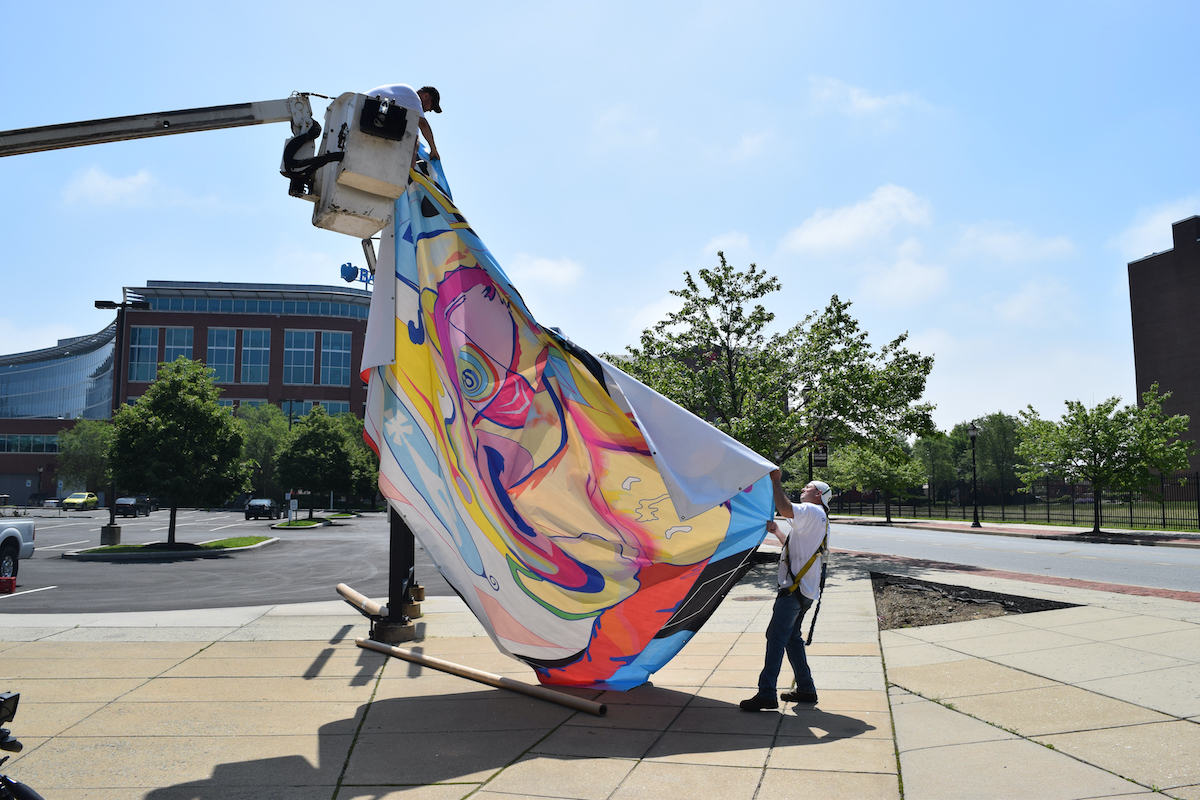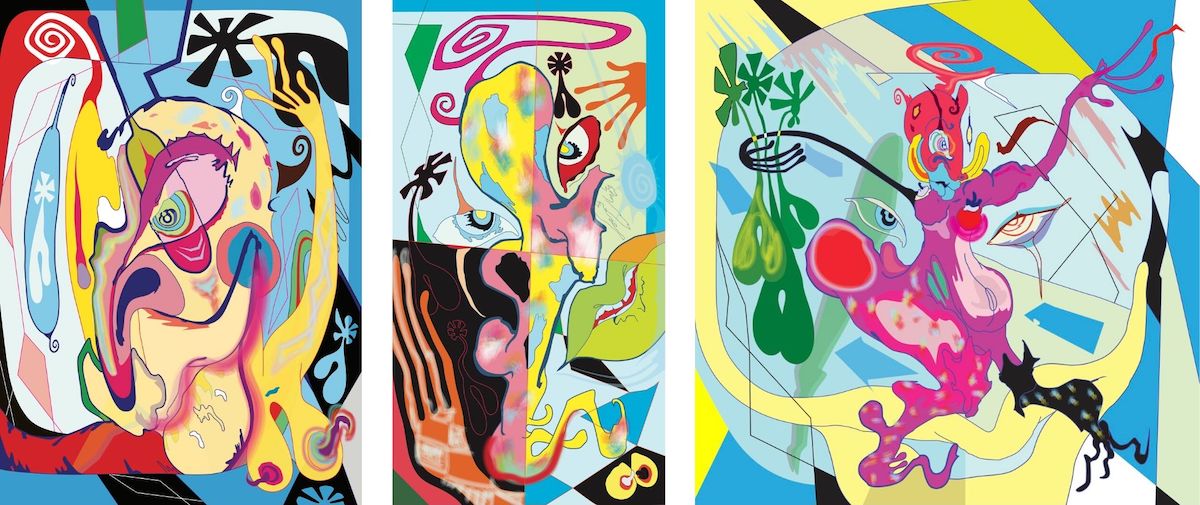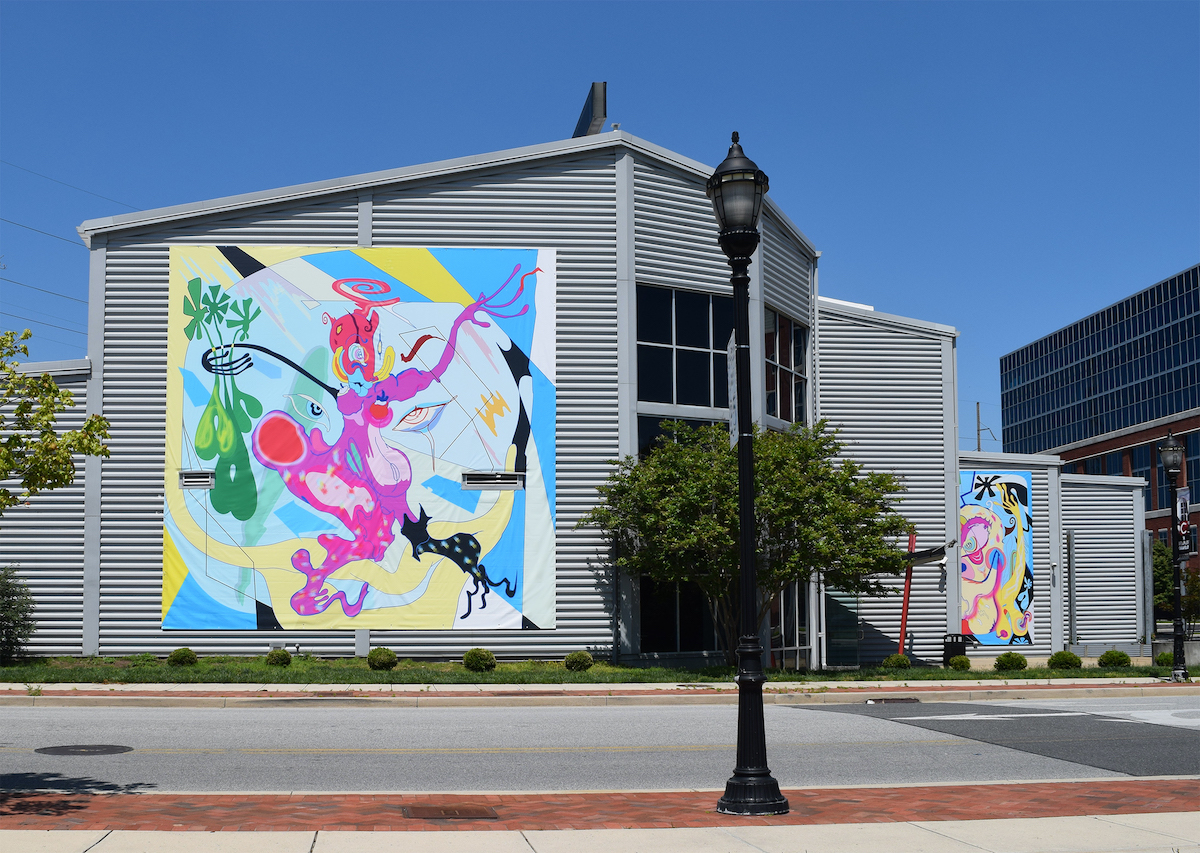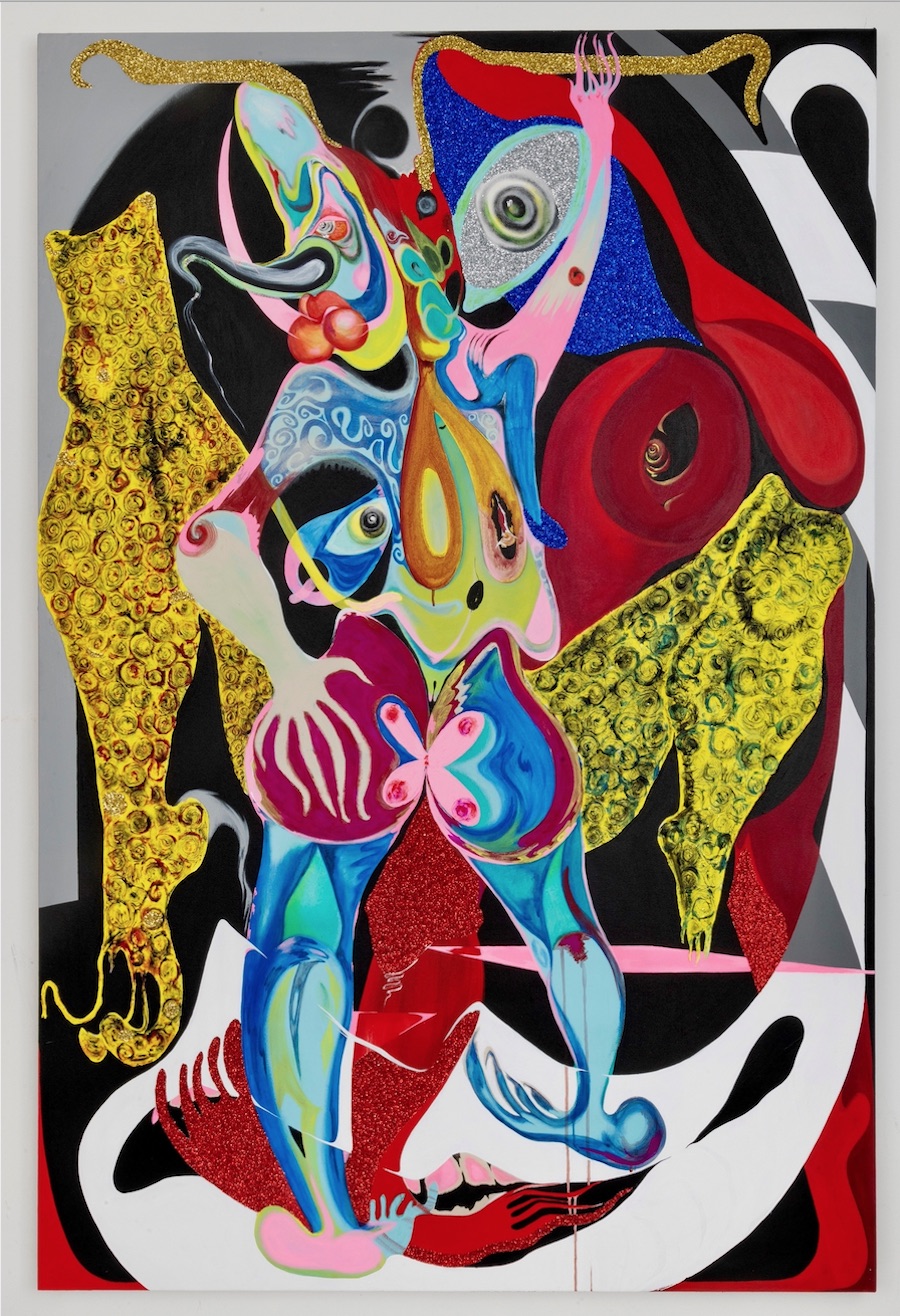In the early fall of 2019, Leslie Shaffer, the newly appointed Executive Director at The Delaware Contemporary, asked me to work with the 40-year-old arts organization as a curator-in-residence. I had known Shaffer from her time at Baltimore’s Contemporary where she served as first Director of Education and then Interim Executive Director in the late 1990s and early 2000s. It was exciting to hear her talk about her vision for activating the exterior of TDC’s building, a former railroad car assembly plant in Wilmington’s evolving Riverfront neighborhood.
Having spent much time drifting in and out of Wilmington’s Amtrak station gazing at TDC’s distinctive metal façade, I proposed commissioning monumental banners that could be viewed by both community members and train passengers. We soon discovered that travelers on I-95 would also see the two-story works. Shaffer and her team grew the idea into an ongoing series and reconceived TDC’s façade as a space dedicated to art: The Platform Gallery. The accessibility and inspiration this initiative offers has only become more relevant with the onset of COVID-19.

Launching in 2020, we wanted to join institutions across America in celebrating the centennial of women’s suffrage by selecting an outstanding emerging female creative leader for the commission. Theresa Chromati was a clear choice. An artist of Guyanese-American descent, Chromati has profound connections to cities along the Northeast corridor. She was born and raised in Baltimore, attended Wilmington’s Delaware College of Art and Design, as well as the Pratt Institute, and now lives and works in New York City.
Her complex and dynamic abstracted paintings of figures are anchored in the experiences of Black women’s lives and bodies and have been gaining ever greater recognition. Works have recently been acquired by the Pérez Art Museum in Miami and the Nasher Museum of Art at Duke University, selected by Mickalene Thomas for her project at the Baltimore Museum of Art, and featured in the “Practice in Print” section of the Studio Museum of Harlem’s magazine. Chromati is represented by Kravets Wehby Gallery.

The Delaware Contemporary will celebrate Stepping Out to Step In, Chromati’s Platform Gallery commission with a public “drive-thru” opening from 5 to 8 p.m. on Friday, June 19. Originally slated for June 5, the opening was postponed in support of the anti-police brutality protests planned for the same evening. TDC staff, board members, and others will be handing out art-making materials June 5 “that can be used to share your message.”
The banners will remain on view until November 30, 2020. A solo exhibition of Chromati’s paintings is planned for TDC’s galleries, starting September 11, 2020, circumstances permitting. Future Platform Gallery artists include Anna KE in December 2020 and Meleko Mokgosi in June 2021.
The following interview offers insight into Chromati’s ideas and process.













